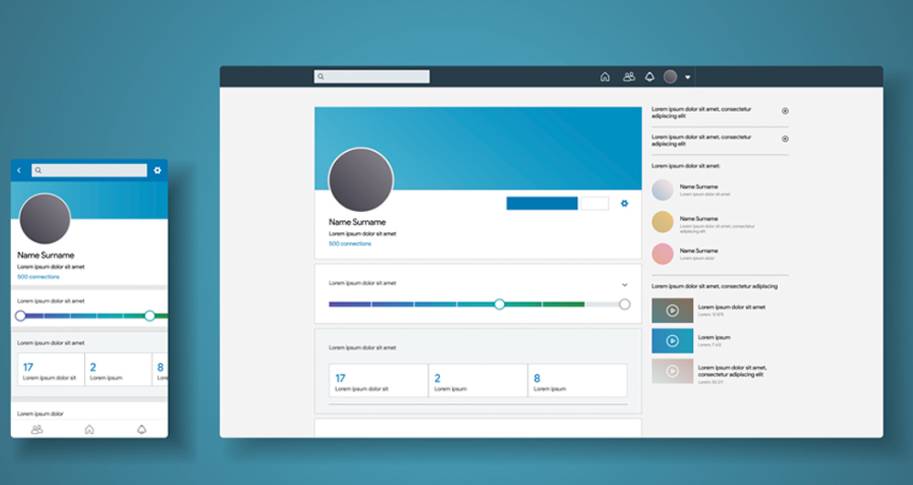12 Tips to Make the Most of Your Linkedin Articles

May 7, 2020 | By Lindsey Wagaman and Stephen Caldwell
A Walton College professor assigned students the task of writing a LinkedIn article based on lessons they learned from executives who spoke to their class, asking for tips to share on the process for writing and developing an article that has impact.
Posting insightful articles on LinkedIn is a strategic focus for progressive business leaders and academics, so we figured it would be helpful to share the tips more broadly. They fall into two categories: writing tips and marketing tips.
Tips for Writing LinkedIn Articles
- Add value to the audience.
- Define your one-thing theme.
- Write multiple headlines.
- Limit subpoints.
- Embed links to sources
- Keep it short.
- Write well.
LinkedIn is a platform for professionals, so the value needs to speak primarily to readers’ lives at work. The content can have a personal component – it’s great to give some personality to it – but the context needs to be about work and the point needs to be about adding value. Share something readers need to know and can somehow use to improve themselves and/or their organization.
Start by asking a simple question: What is the one big idea I want to convey? Nail that and make sure everything else points back to it. This need to be clearly stated within the first two paragraphs (don’t bury the lead, as journalism professors would say). Be specific and envision it as a headline. “Three things I learned while studying from home” is vague; “three things I learned about eliminating distractions while studying from home” is specific.
Brainstorming titles for the article leads to a good headline and improves the quality of the article. Crafting three to five titles before writing the article can help give you direction. Writing them after the article is finished can help ensure the content of the article is tight and focused. The titles you don’t use also can end up as subtitles or one-liners in the article.
Occasionally an article will lend itself to a long list – a top 10, for instance. In that case, the explanations need to be brief. (Example: this article.) Otherwise, limit your subpoints to three to five strong ideas, and, again, tie each one back to the main theme. If they don’t tie back, don’t include them.
Don’t sacrifice your integrity by failing to give credit where credit is due. If you quote from an article or use someone else’s big idea, give them credit by embedding a link in two or three key words (not an entire sentence). Also, confirm the original source when quoting famous people. Most quote websites on the internet are awful and it’s not usual to find the same quote attributed to several people. Trace it back to the original (wikiquote.com and quote investigator are good resources, as is this page from the New York Public Library).
Opinions vary on the “best” length for a LinkedIn article, but we suggest 500-600 words and no more than 1,000. If it demands more than that, the article is probably better suited as something like a whitepaper or a two-part series
General rules for good writing applies: write tight, write right; write in active voice; show me don’t tell me; keep it simple (big words don’t actually make you any smarter); self-edit; read it out loud in the editing process; and avoid articles that create reader MEGO (my eyes glaze over).
Tips for Marketing LinkedIn Articles
- Get visual.
- Use lists.
- Divide the content.
- Include a caption.
- Analyze the title.
Include media within the text to supplement your writing and make the article more interesting. At the very least, use a header image. The “stopping power” of a visual plays a big role on social media, so you want your content to catch a reader’s eyes. Posts without a header don’t show up well on the LinkedIn feed and result in significantly fewer clicks. LinkedIn gives you the option to add pictures, videos, and slides in your article. Including these keeps your reader engaged and helps break up walls of text.
Readability is key in LinkedIn articles. When possible, include bulleted or numbered lists to explain points
Subheads guide the reader through your article. They provide a framework of section topics, while also improving search engine optimization (SEO). Think of SEO as the “secret sauce” that makes some results show up before others in search engines like Google. Include keywords and phrases in your subheadings to maximize your article’s searchability.
Don’t post the article without saying something about it. When you’re ready to publish, write a brief caption that summarizes what the article is about. The caption is what users will see on their feed, so you want to catch their attention and leave them wanting more. Tag people or businesses if relevant, but don’t forget the hashtags. Add three or four hashtags related to the content to increase the visibility of your article.
The headline should be clear, concise, and informative, but it also needs to be algorithm friendly to get the most attention on the platform. A headline analyzer like this one will provide feedback to help you make the best choice possible.


